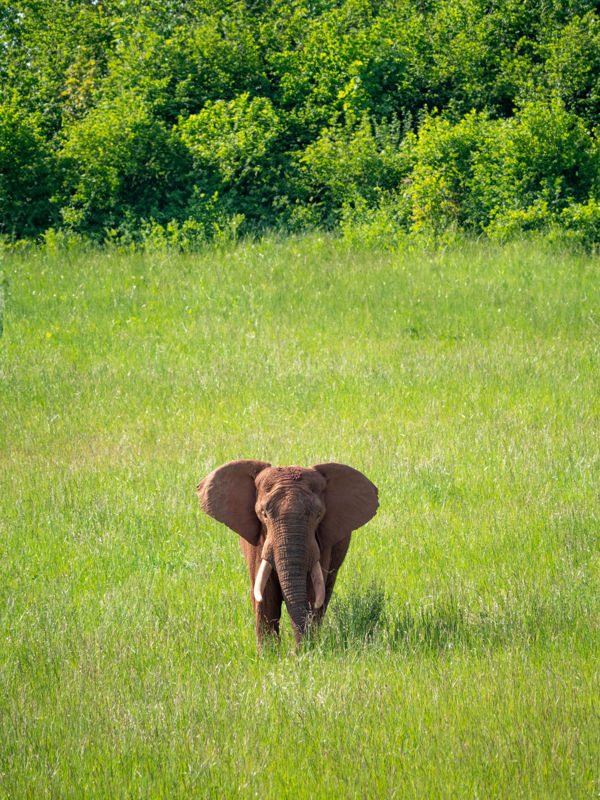International Primate Day 2022
13th Apr 2022
Noah's Ark Zoo Farm Celebrates International Primate Day
On the 1st September we are celebrating International Primate Day here at Noah’s Ark Zoo Farm. This annual occasion allows us to take time to celebrate and appreciate the beauty and importance of primates as well as learning some interesting and unusual facts about them!
But first - what are primates? Primates are a large and diverse group of mammals accounting for over 300 different species which include chimpanzees, gorillas, baboons, lemurs and also humans. Primates have large and complex brains relative to their bodies and are some of the most social animals on the planet. They have long lifespans for mammals of their size and all share great physical agility and adaptations for climbing trees such as dexterous hands, the ability to walk on two limbs and modified walking on four limbs. Nonhuman primates can be found on all continents expect Australia and Antarctica, and usually inhabit tropical rainforests and live in trees. Unfortunately, primates are facing an impending extinction crisis, with 60% of species threatened and 75% have declining populations. The threats to their existence include deforestation, monkey drives and primate hunting for food. Fighting to protect nonhuman primates is hugely important as they are an essential component of tropical biodiversity and help to maintain a healthy ecosystem.
Here at Noah’s Ark, we have four species of primates including siamang gibbons, ruffed lemurs, ring-tailed lemurs, and cotton top tamarins. Each group of these monkeys has distinct features ranging from black and white ruffed fur (ruffed lemurs) to large powerful arms and loud vocalisations (gibbons), to bright orange eyes (ring-tailed lemurs), to having fluffy white manes of fur framing their faces (cotton top tamarins). Sadly, each of these four species is endangered according to the International Union for Conservation of Nature’s (ICUN) Red List. At Noah’s Ark we want to ensure we are doing as much as we can to help their species, which is why we work with charities such as the World Land Trust who work to protect their habitats, as well as other projects and initiatives who work in countries that primates inhabit such as Madagascar to promote environmental education and biodiversity research.
Siamang Gibbons
- Siamang gibbons are the largest of the gibbon’s species
- Their air sacks under their chins can inflate to the size of their head
- Their arms are bigger than their legs, but they prefer to walk around on their legs than on all four limbs. They use their arms to swing around the canopy
- Our gibbons don’t eat bananas because they are too sugary!
- Gibbons are omnivores and normally feast on flowers, seeds, tree bark and plant shoots
- A gibbon’s call is so loud it can be heard two miles away!
Lemurs
- Ring tailed lemurs have piercing orange eyes whereas ruffed lemurs have yellowish brown eyes
- The only island that lemurs inhabit is Madagascar
- Ruffed lemurs are the only primate and mammal that can swallow upside down
- Ring tailed lemurs spend more time on the ground than in trees compared to other lemurs
- Lemur troops are always ruled by a female
- Ruffed lemurs make nests for their babies unlike other lemur species that carry their babies
- Ruffed and ring tailed lemurs are only two of over 100 kinds of lemur
- Lemurs are the most endangered group of mammals - 98% of lemur species are endangered in total
- In Latin, the word lemur means ‘ghost’ or ‘spirit’
- In the wild, ruffed lemur love to eat nectar and ring tailed lemurs are known to eat small vertebrates such as chameleons
Cotton Top Tamarins
- Cotton top tamarins are only found in Columbia
- They use their hair to communicate with each other
- They drink water from leaves that are wet from rain
- They weigh between 300 - 450g
- They are excellent climbers who have claws on their fingers to help them climb trees with ease
- There can be more than one adult female in a social group but only one female per group actually breeds
- They fluff up their fur to intimidate intruders
- They usually give birth to twins, and the whole social group shares the responsibility for the care of new borns
Visit the zoo this weekend to pick up a special primate quiz from the ticket office and be in for a chance to win a primate adoption pack!

Sign Up to the newsletter
Would you like to receive marketing emails from us? Please tick the box if you would like to receive information about future events, ways you can support our charity, offers and discounts.

